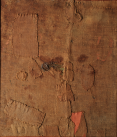Abstract
The manuscript Bern, Bürgerbibliothek 411, dated to the end of the twelfth or beginning of the thirteenth century, constitutes an example, rather rare from this time, of the gathering of several school commentaries on classical Latin authors, namely those on Lucan, Virgil, Ovid, Statius, Sallust, and Terence, six of the ten that Birger Munk Olsen has defined as auctores maiores. The analysis of some of these commentaries allows us to ascribe them to the teaching of the schools of Orleans, intensively dedicated to the study of literature during the twelfth–fourteenth centuries. However, the volume, if homogeneous in appearance, is actually a 'recueil factice,' a compilation consisting of four originally independent codicological units. But a detailed codicological study reveals some clues, leading to the hypothesis that these elements were bound together at an early date, and that the result embodies a schoolbook of the end of the Middle Ages – this is also supported by the history of the manuscript and what can be deduced from some elements of the paratexts.Except where otherwise noted, the content of this site is licensed under a Creative Commons Attribution-ShareAlike 4.0 International (CC BY-SA 4.0).
Authors retain copyright of their work. The CC BY-SA 4.0 licence allows readers to copy and redistribute the material in any medium or format, and to remix, transform, and build upon the material for any purpose, even commercially, as long as the original author is credited and as long as any works that are derived from the original are distributed under the same terms.
Metrics
Metrics Loading ...

